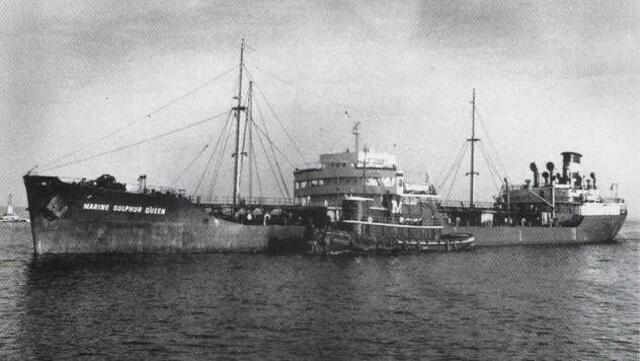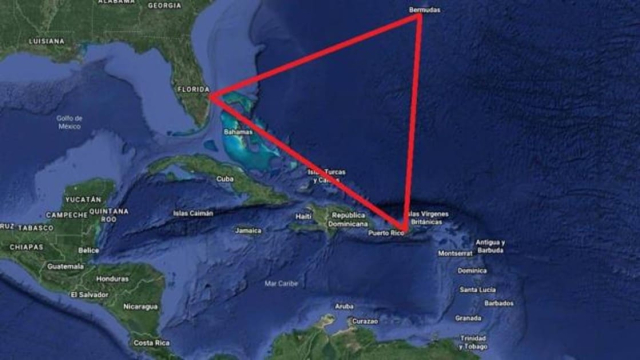The Bermuda Triangle, a region of the Atlantic Ocean bounded by Miami, Bermuda, and Puerto Rico , has fascinated and intrigued humanity for decades. This mysterious stretch of sea is famous for unexplained disappearances of ships and planes, which have given rise to a multitude of theories, from natural phenomena to paranormal conspiracies. What is really happening in this enigmatic corner of the planet?
Over the years, the Bermuda Triangle has been the subject of numerous reports of unexplained disappearances. From the mysterious disappearance of Flight 19, a group of US Navy bombers, in 1945, to the cargo ship SS El Faro in 2015, stories of loss in this area have fueled legend. Extreme weather conditions, unpredictable ocean currents and the possibility of human error are some of the rational explanations proposed by scientists , but the aura of mystery persists.
However, beyond the stories of disappearances, the Bermuda Triangle is an area of stunning natural beauty and surprising biodiversity . Its crystal clear waters and vibrant coral reefs are a paradise for divers and adventurers looking to explore its underwater secrets . This contrast between perceived danger and tangible beauty adds an extra layer of intrigue to the region, making the Bermuda Triangle a fascinating destination for scientists and tourists alike .
In popular culture, the Bermuda Triangle has been a recurring theme in books, films, and television shows, perpetuating its status as an unsolved enigma . Although science offers reasonable explanations for many of the disappearances, the combination of mystery, danger and beauty continues to capture the imagination of people around the world . Whether one is a skeptic or a believer in the paranormal, the Bermuda Triangle remains a symbol of the unknown and the inexplicable in the vast ocean.
You may also be interested in: Intercontinental navigation
Ships missing in the Bermuda Triangle

- USS Cyclops (1918): This colossal ship of the United States Navy disappeared without a trace while traveling from Barbados to Baltimore. With 306 people on board, its disappearance is one of the largest non-combat disasters in the history of the US Navy. Cyclops' last communication was a routine message in which he reported no problems. With no distress signals or remains found, the disappearance of the Cyclops remains an enigma.
- Flight 19 (1945): One of the most famous Bermuda Triangle cases, Flight 19 consisted of five US Navy Avenger bombers on a training mission. The last communication from the flight leader, Lieutenant Charles Taylor, reflected confusion and disorientation: "We are not sure of our position, we cannot see land... everything is wrong... it is as if we were...". Contact was subsequently lost, and despite a massive search, neither the planes nor the 14 crew members were found.
- SS Marine Sulfur Queen (1963): This 524-foot-long tanker, carrying molten sulfur, disappeared in February 1963. The Marine Sulfur Queen's last communication was a routine position report sent from near Key West. A few days later, some flotsam and life jackets were found, but the ship and its crew of 39 were never located.
- SS El Faro (2015): More recently, this 790-foot freighter sank in October 2015 while sailing from Jacksonville, Florida, to Puerto Rico during Hurricane Joaquin. Captain Michael Davidson's last communication described rapidly deteriorating weather conditions and engine problems: "We have a serious problem, a real problem." Although the ship's data recorder was recovered, the tragedy claimed the lives of all 33 crew members.
You may also be interested in: Around the world by sailboat
Scientific explanations about the Bermuda Triangle

The Bermuda Triangle has been the subject of numerous scientific investigations over the years, and although mysteries remain, several rational explanations have been proposed to clarify the phenomena reported in this region. Some of the most prominent scientific theories have been:
- Extreme weather conditions: The Bermuda Triangle is located in a region prone to tropical storms and hurricanes , which can arise suddenly and with great force. These storms can disorient sailors and pilots, and their violent conditions can easily sink ships or shoot down airplanes. Additionally, strong and changing ocean currents can further complicate navigation.
- Human errors: Many of the disappearances in the Bermuda Triangle can be attributed to human error. Disorientation, misuse of navigation instruments and lack of proper communication can lead to catastrophic situations. In the case of Flight 19, for example, the flight leader's confusion about his position is believed to have contributed to the loss of the group.
- Technical problems: Mechanical and technical failures are common in any means of transportation, and the Bermuda Triangle is no exception. For example, the SS El Faro experienced problems with its engine in the middle of a hurricane , which contributed to its sinking. Lack of proper maintenance and adverse conditions can exacerbate these problems.
- Hydrated methane: A more recent theory suggests that large bubbles of methane gas trapped beneath the seafloor can be suddenly released, reducing the density of water and causing ships to lose buoyancy and sink rapidly . Although this theory is intriguing, there is no conclusive evidence directly linking these gas releases to the disappearances in the Bermuda Triangle.
- Magnetic variations: The Bermuda Triangle is one of the few areas on Earth where magnetic north and true north coincide , a phenomenon known as compass drift. This can cause confusion in navigation systems if they are not adjusted correctly, leading ships and planes off course and potentially to their demise.
- Marine and geological phenomena: The Bermuda Triangle region is known for its underwater activity, including earthquakes and submarine landslides . These events can alter marine terrain and create giant waves known as tsunamis , which could sink ships and down planes in the area.
You may also be interested in: What to do in The Bahamas?
Is it possible to navigate the Bermuda Triangle?

Sailing through the Bermuda Triangle is not prohibited . In fact , it is an area heavily traveled by ships and commercial planes . Despite the region's notoriety due to disappearances and mysteries associated with it, there are no official restrictions preventing sailing or flying through the Bermuda Triangle.
Thousands of ships and planes cross the Bermuda Triangle each year without incident . It is a common route for maritime and air traffic due to its strategic location in the Atlantic. Vessels and aircraft transiting this area are equipped with modern navigation and communication technology , which has significantly reduced the risks associated with disorientation and technical problems that may have contributed to past incidents. Maritime and air transportation companies follow strict maintenance and safety protocols to minimize risks. Most incidents can be attributed to adverse weather conditions, human error or technical failures, factors that are manageable with proper precautions.
The Bermuda Triangle maintains a reputation for danger primarily due to media coverage and popular fascination with historical mysteries and disappearances . However, scientific explanations and safe passage statistics show that the region is no more dangerous than other areas of the ocean.
We invite you to take a look at other articles at: https://yate.co/es/blog





